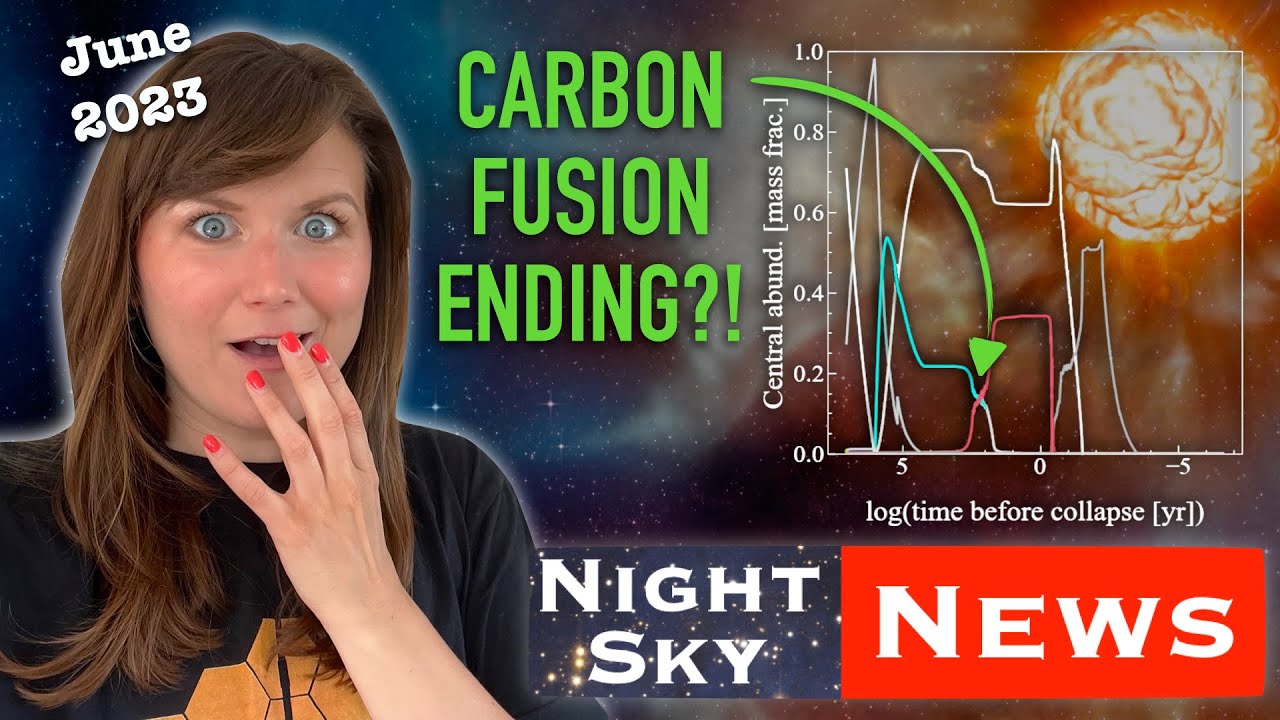Betelgeuse is a red supergiant star in the constellation Orion, the tenth brightest star in the sky, with a magnitude that varies irregularly between 0 and +1.6. As a supergiant star, it is enormous: if at the centre of the solar system, the orbits of the four inner planets (Mercury, Venus, Earth, and Mars) plus the main asteroid belt would be within the star. With a mass estimated between ten and twenty times that of the Sun, Betelgeuse burns its fuel rapidly, and is estimated to be less than 10 million years old, compared to around 4.5 billion years for the Sun.
Massive stars like Betelgeuse first consume their hydrogen fuel, fusing it to helium, after which the star’s core contracts, increases in temperature, and begins to fuse helium into carbon. As carbon accumulates and helium is depleted, carbon fusion begins, producing neon, sodium, and magnesium. When carbon is exhausted, further fusion reactions fuse neon, oxygen, and silicon into heavier elements, each proceeding faster and for a shorter time, until eventually iron is produced, at which point fusion no longer releases net energy. Gravity then causes the core of the star to collapse, triggering a supernova explosion.
The sequence of events leading to a supernova begins with a star’s exhausting its supply of carbon—after that things happen on time scales of years to fractions of a second. Now, in a paper posted on arXiv, “The evolutionary stage of Betelgeuse inferred from its pulsation periods” (full text at the link), the authors analyse the pulsation periods of Betelgeuse and “conclude that Betelgeuse is in the late stage of core carbon burning, and a good candidate for the next Galactic supernova”. Here is the complete abstract.
Betelgeuse is a well known bright red supergiant that shows semi-regular variations with four approximate periods of 2200, 420, 230, and 185 days. While the longest period was customarily regarded as LSP (long secondary period) of unknown origin, we identify the ~2200-d period as the radial fundamental mode, and the three shorter periods as the radial first, second, and third overtones. From a nonadiabatic pulsation analysis including the pulsation/convection coupling, we have found that these radial pulsation modes are all excited in the envelope of a model in a late stage of the core-carbon burning. Models with similar pulsation property have masses around 11M_\odot (19M_\odot at ZAMS [Zero-Age Main-Sequence]) with luminosities (log L/L_\odot =5.27\sim 5.28) and effective temperatures (log T_{\rm eff}\approx 3.53) that are consistent with the range of the observational determinations. We also find that a synthetic light curve obtained by adding the fundamental and the first-overtone mode qualitatively agrees with the light curve of Betelgeuse up to the Great Dimming. We conclude that Betelgeuse is in the late stage of core carbon burning, and a good candidate for the next Galactic supernova.
The paper concludes:
We have found carbon-burning models that excite the radial fundamental mode, as well as the first, second, and third overtones. The periods excited pulsation modes agree with periods of 2190, 417, 230, and 185 d that had been detected in Betelgeuse. On the HR diagram, these models are located within the allowed range of effective temperature and luminosity of Betelgeuse. Beginning with a mass of 19 𝑀_\odot at ZAMS (with a rotation velocity of 0.2 or 0.4 𝑣_{\rm crit}), the models lose significant mass mainly in the core-He burning stage to have a mass of 11 ∼ 12 𝑀_\odot in the core carbon-burning stage. A large radius of about 1300 R_\odot (needed for the long-period fundamental mode) is supported by interferometric measurements of the angular diameter combined with the distance. We conclude that Betelgeuse should currently be in a late phase (or near the end) of the core carbon burning. After carbon is exhausted in the core, a core-collapse leading to a supernova explosion is expected in a few tens years.
A supernova of Betelgeuse, estimated to be around 600 light years from the Sun, would be a spectacular event. With a magnitude of -8 to -12, it would be a point source as bright as a half Moon, easily visible in broad daylight, and bright enough to read a newspaper on a Moonless night. The supernova would remain this bright for two to three months before dimming, leaving a rapidly-expanding supernova remnant whose evolution could be observed at close hand (around ten times closer than the Crab Nebula from the supernova of 1054 A.D.). A supernova at this distance would pose no threat to the Earth, but would forever change the appearance of the constellation of Orion.
